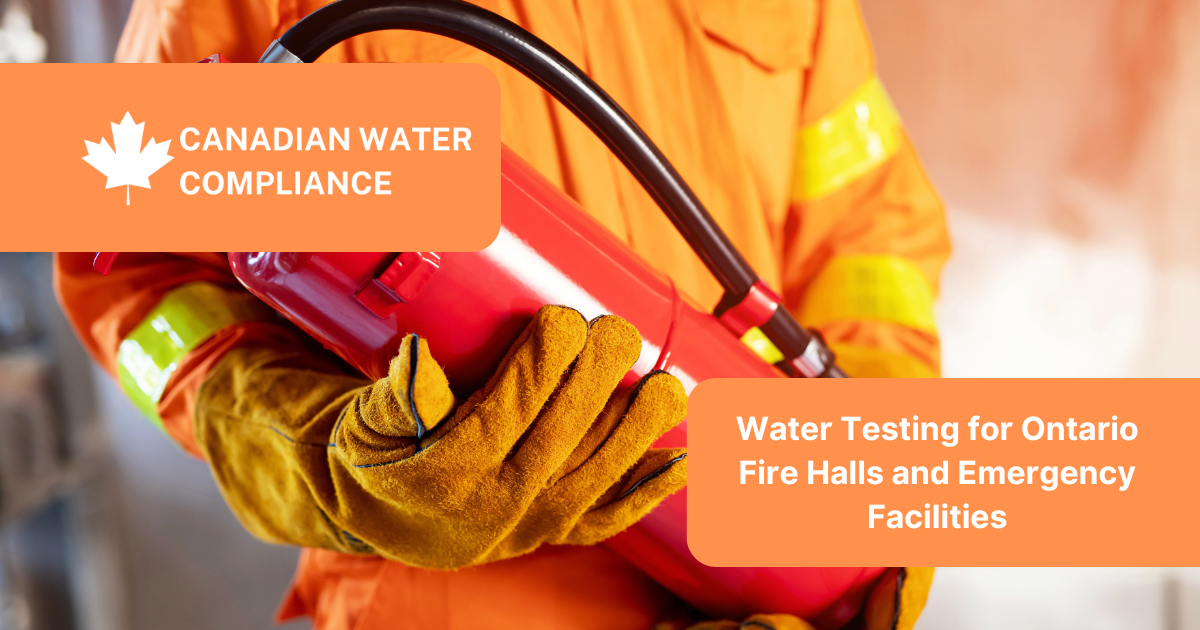
Written By: Canadian Water Compliance | On
Fire halls, EMS stations, and other emergency service facilities are essential pillars of Ontario communities—but when it comes to water quality, they’re often overlooked. Many rural or small-town fire halls operate on private wells or cistern systems, placing them under different regulatory expectations than urban facilities connected to municipal supplies.
Given the role these buildings play in public safety and first response, ensuring clean, safe water is not just good practice—it’s a critical component of operational readiness and liability management.
Emergency personnel rely on on-site water systems for:
Drinking water for staff and volunteers
Showers, kitchens, and washrooms
Cleaning equipment and decontamination
On-site training, tank filling, and apparatus maintenance
Contaminated water in these settings can compromise responder health, interfere with operational needs, or even become a liability if visitors or trainees are exposed. Testing is particularly vital in buildings that serve dual public use or are rented for community functions.
If a fire hall is connected to a private well, cistern, or surface water source, and the water is made available to staff or the public, it may be classified as a Small Drinking Water System (SDWS) under O. Reg. 319/08.
In this case, the hall is subject to:
Routine microbiological testing (typically every two weeks for E. coli and Total Coliforms)
Annual chemical parameter testing (e.g., nitrates, sodium, pH)
A Site-Specific Risk Assessment (SSRA) and approval from the local Public Health Unit
Flushing, disinfection, and documentation protocols
Even facilities on municipal water may benefit from in-house testing, especially in older buildings where plumbing may contribute to lead or copper leaching.
Depending on the source and use of water, fire halls should consider testing for:
E. coli and Total Coliforms (routine safety indicators)
Nitrate and Nitrite (particularly for staff with infants at home)
Lead and Copper (in older plumbing systems)
Turbidity and pH (for water quality assessment)
Sodium and Hardness (affecting hydration and equipment)
Water used in decontamination or for gear cleaning may also need to meet specific standards to prevent equipment damage or ineffective rinsing.
If test results exceed Ontario Drinking Water Quality Standards:
A Boil Water Advisory may be issued by the public health unit
The hall may need to shut down water access temporarily or arrange for bottled water
Corrective actions like system disinfection, filter installation, or plumbing repairs may be required
Follow-up testing is needed to lift advisories
Non-compliance or repeated failures could affect operational status and public confidence.
We help rural municipalities, volunteer departments, and regional services stay compliant and safe by offering:
Certified sampling and laboratory testing
Site-specific water testing plans for SDWS compliance
Risk assessments and PHU coordination
Routine monitoring programs and documentation support
Emergency response testing in the event of contamination
When lives are on the line, there’s no room for uncertainty. Let Canadian Water Compliance help keep your water system safe, clear, and inspection-ready.